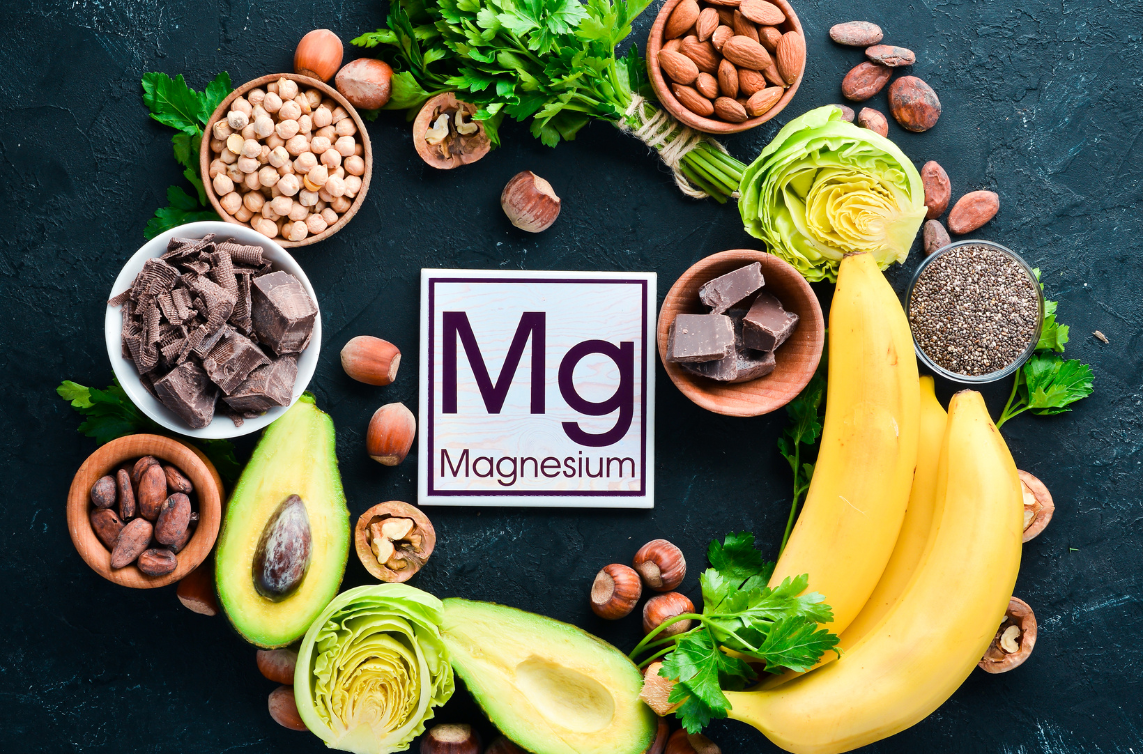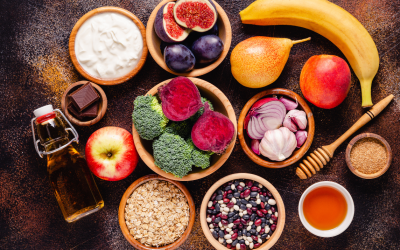Magnesium is important for insulin sensitivity – the underlying problem with type 2 diabetes.
But there are also other reasons to get enough magnesium, preferably from food. It’s important for bone density, which is a big concern for middle age women!
Many people with diabetes also struggle with high blood pressure and having diabetes more than doubles your risk of heart problems. And there is a connection between low magnesium and heart disease and high blood pressure because magnesium helps keep blood vessels more elastic by protecting the fibers from calcium deposits and helps the blood vessels dilate when necessary.
Magnesium plays an important role in heart muscle working properly because it is necessary for the sodium-potassium pumps in our body that keep balance of sodium and potassium levels.
So how much magnesium do we need each day? The US recommended dietary allowance is 400 mg/day for women and 420 mg daily for men.
Should you take a magnesium supplement?
My advice is only if recommended by your doctor, dietitian, if your blood level is low or if you can’t get enough from foods. There are also different forms of magnesium to choose from and differences in quality of various brands of supplements, so it’s always best to check with your health care team before adding supplements, especially if you have other medications you take or a heart or kidney condition.
Here’s more info to know about magnesium . . .
- Magnesium is a really important mineral that our body needs for more than 300 enzyme systems that control muscle, nerve, bone, protein, DNA, glucose, and energy metabolism.
- About 99% of total body magnesium is located in bone, muscles, and soft tissues. For this reason a blood test of magnesium level won’t necessarily detect if we have low magnesium levels.
- Substances like alcohol, many over-the-counter and prescription drugs, such as proton pump inhibitors (meds such as Nexium, Prilosec or omeprazole), can lower body levels.
- A deficiency in magnesium can contribute to health problems such as constipation, muscle spasms, arrhythmias, hypertension, attention-deficit/hyperactivity disorder, anxiety, seizures, leg cramps, restless legs syndrome, kidney stones, myocardial infarction, headaches, premenstrual syndrome, fibromyalgia, chest pain, osteoporosis, altitude sickness, diabetes, fatty liver disease and fatigue.
- Processed foods are stripped of most of their natural magnesium. In general, dark green leafy veggies, beans, nuts and seeds are best sources of magnesium. Eating too much processed food is a big reason for possible magnesium deficiency.
- Since it’s is eliminated by the kidneys, if you have kidney function below normal be sure to check with your doctor before taking magnesium supplements as too much can be dangerous as well.
- Top magnesium foods, with 25 mg magnesium or more per serving:
Spinach, Swiss Chard, Beet Greens, Pumpkin Seeds, Summer Squash, Turnip Greens, Soybeans, Sesame Seeds, Black Beans, Quinoa, Cashews, Sunflower Seeds, Navy Beans, Tempeh, Buckwheat, Pinto Beans, Brown Rice, Barley, Lima Beans, Millet, Kidney Beans, Oats, Tofu, Almonds, Rye, Wheat, Papaya, Flaxseeds, Green Peas, Tuna, Scallops, Collard Greens, Beets, Broccoli, Brussels Sprouts, Raspberries, Winter Squash, Cabbage, Asparagus, Kale.
Here are my top 7 easy ways to get magnesium from food.
- Unsweetened cocoa powder has 26.9 mg per tablespoon. Instead of hot chocolate packets try making your own with cocoa powder, milk and then you can control the amount of sugar you add. Or if you want to enjoy a sweet treat that has some health benefit have a small serving of real vanilla ice cream – real meaning ingredients should be cream and sugar mainly – no fructose, and sprinkle cocoa powder on for chocolate flavor.
- Fresh spinach has 23.7 mg per cup. Make sure your salad has spinach leaves or add them to your smoothie, layer on your sandwich, or add them to your breakfast omelet.
- Include peanut butter (preferably the natural version to avoid added sugar) in your meals or snacks on a regular basis. You will get a healthy source of protein plus 54.1 mg magnesium for every 2 tablespoons.
- Enjoy nuts as a healthy snack. ¼ cup mixed nuts has about 75 mg magnesium. If you don’t like mixed nuts, you can enjoy cashews or almonds since they are at the top of the list!
- Pumpkin seeds are also a fantastic source of magnesium with 2 tablespoons having around 80 mg. If you carve pumpkins for Halloween try roasting the seeds instead of throwing them away!
- Keep enjoying your daily banana! They are a great source of potassium AND magnesium, with one small banana having 27 mg magnesium.
- Add ground flax to your smoothie, salad oatmeal or any other dish you prefer. One tablespoon has 27.4 mg magnesium.
If you are struggling with diabetes and heart health or other nutrition related health problems and would like to chat about the possibility of working with Karen, contact us.







0 Comments